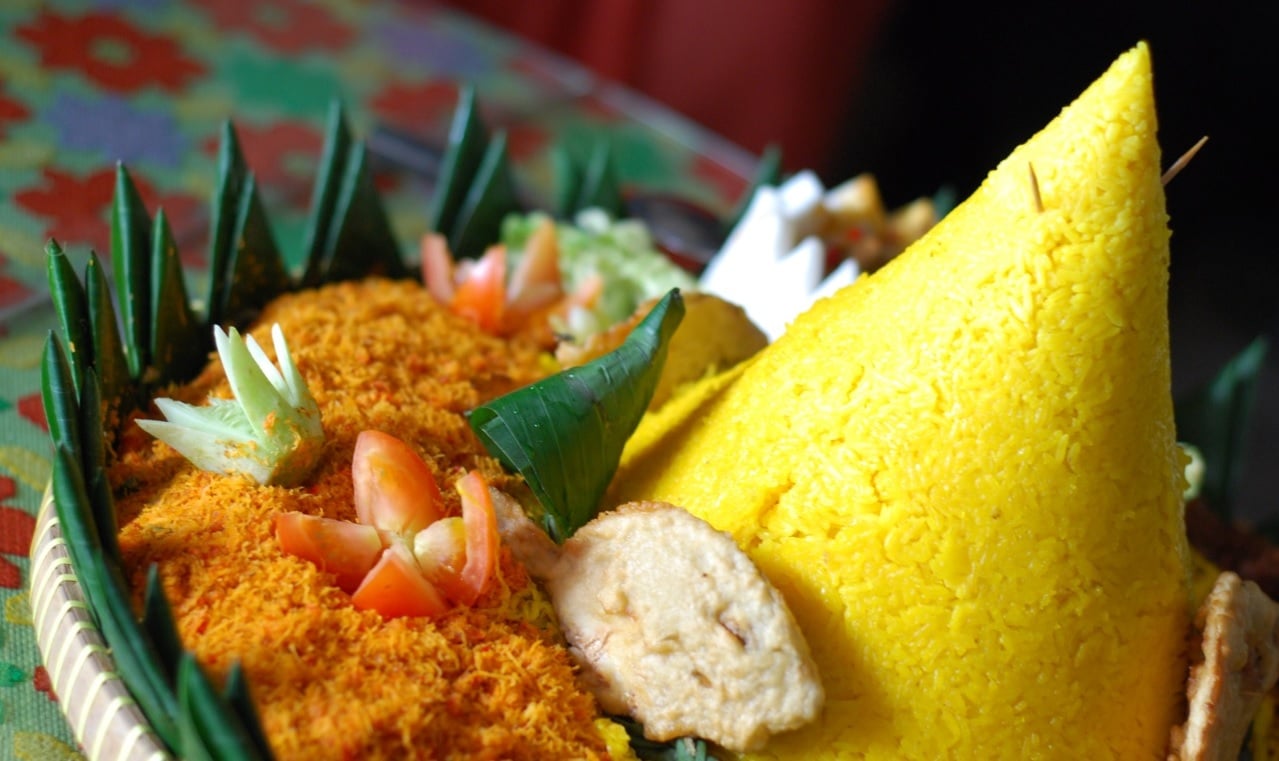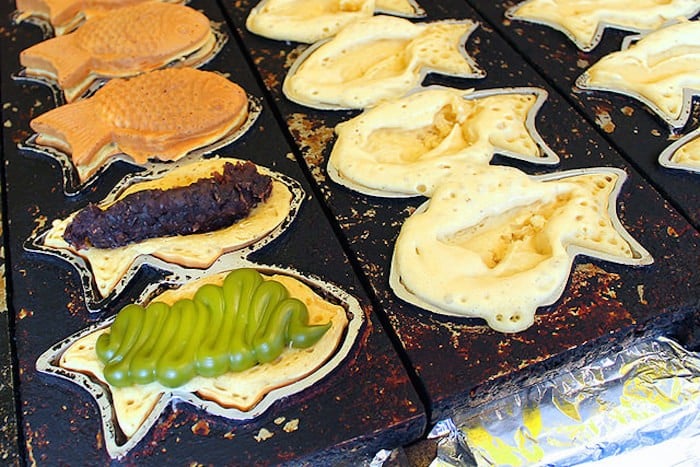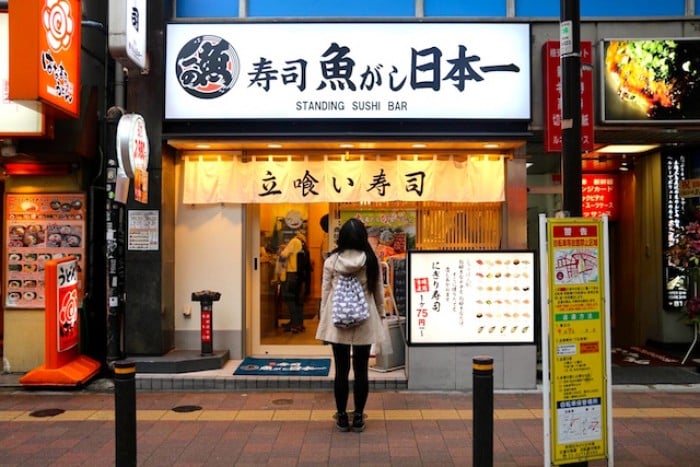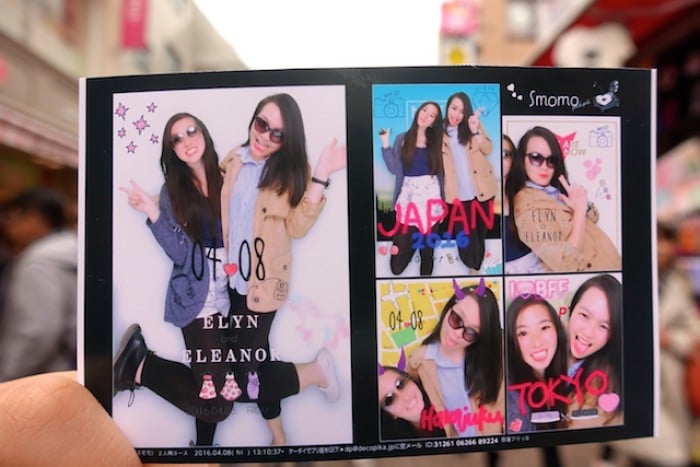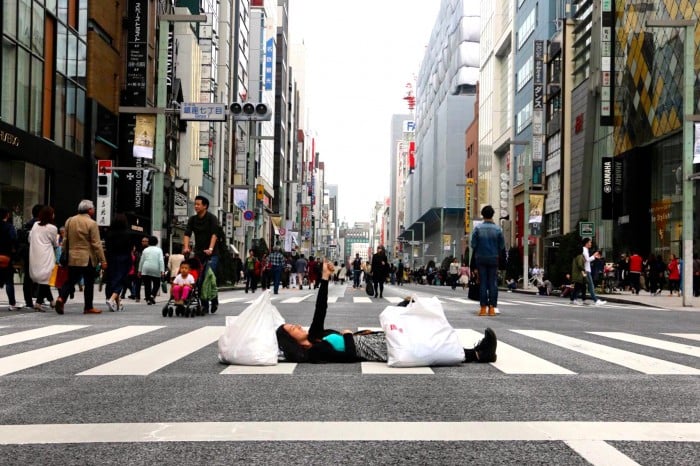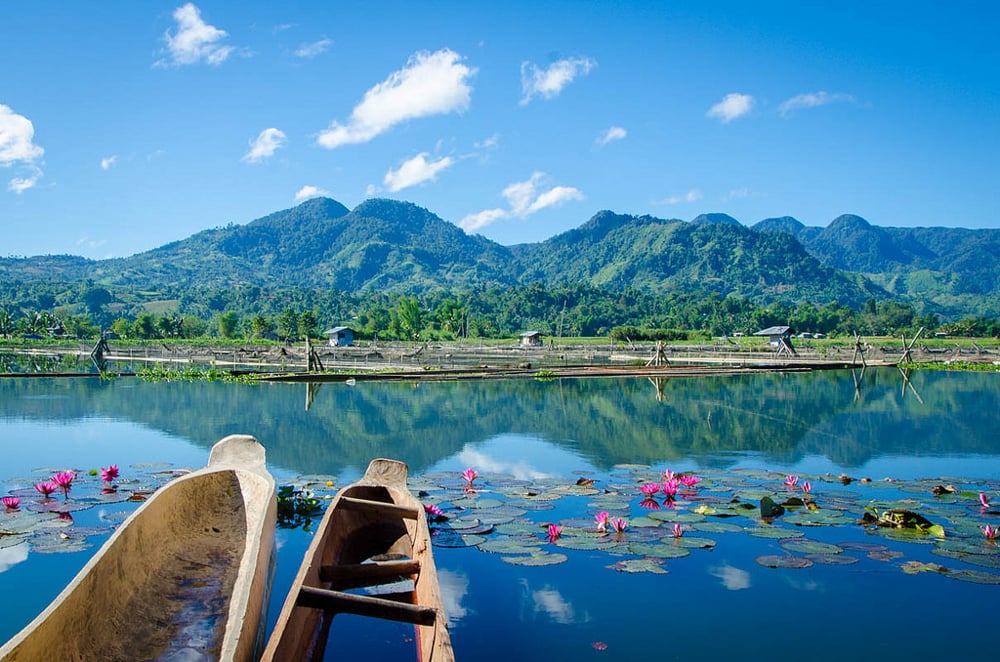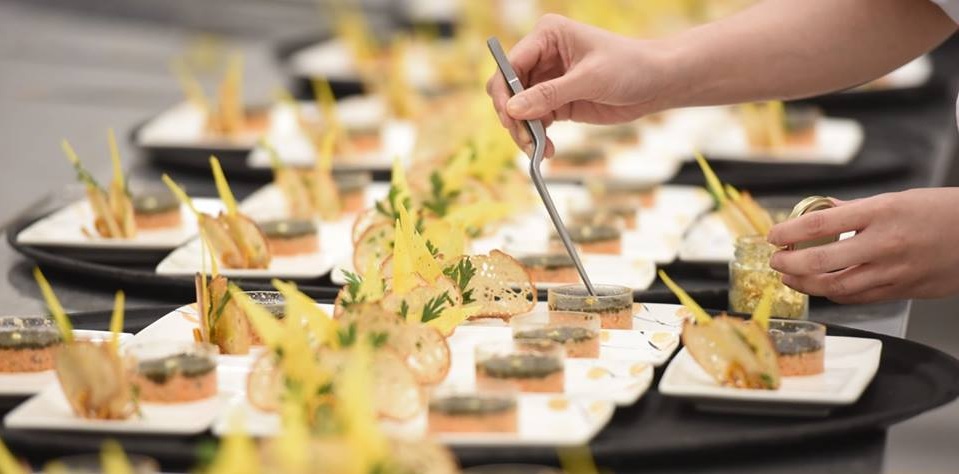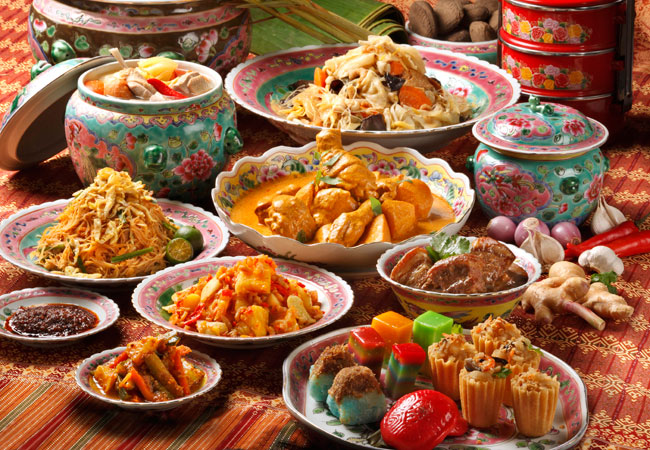Top 20 Awesome Things to Do in Melbourne
Parveen Maghera An avid non-fiction reader, Parveen loves digging deep into stories of unique individuals, be they from Europe or the Middle East. Indeed, if travelling was free, you won't see her again. It is her wish to embark on a world tour some time in her future. You might just see her selfie-ing with the Eiffel Tower, or even consuming the aura of Swat Valley with other native Afghans.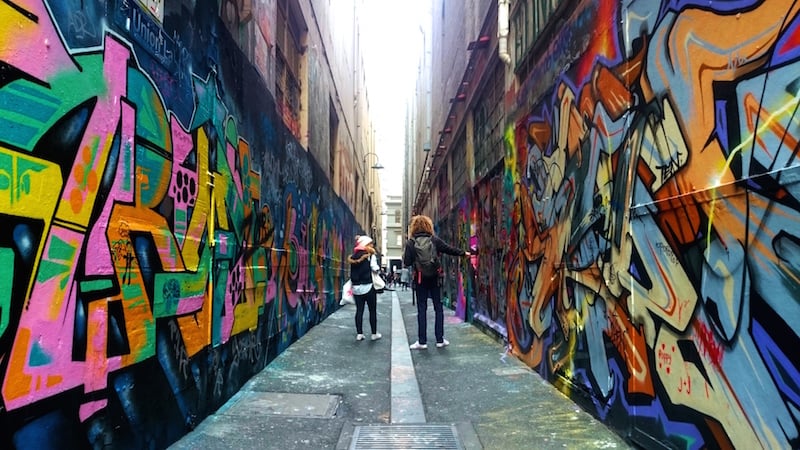
It is true that Melbourne always marvels us with something new no matter how many times we have visited it (even according to the Melburnians). A day’s visit to the city isn’t enough – that is, if you’re the city adventurer of a kind who loves to walk, doesn’t mind getting lost and, above all, understands that adventure does not happen in a rush.
Encapsulating Melbourne City in an article, this piece brings you around the box-styled city centre while pushing you off the track to places accessible from the city itself. Plus, if you’re a photo junkie, just make sure you’ve got enough battery and memory space for your clicks!
Also read: Why Melbourne Should be your Next Girls Getaway
1. Go to the Visitor Information Centre
If you are new to the city, it is advisable to grab a map because while you might find it fun to get lost, the map itself is a wonderful information-provider for all the places you could visit, things you could do, and it is the best material for planning your own itinerary. You could retrieve a map online. However, it’s perfectly fine to don the tourist look, holding a map and a pen, discussing to yourself or with your fellow travel mate on where to head to next. Melburnians are also very accommodating; just ask anyone for directions if you think you’re getting lost. They won’t bite! Oh and *coughs* you will know where there is free Wi-Fi access.

There are three Visitor Information Centres within the city: one on Swanston Street at the Federation Square, another in Fitzroy Gardens, and a smaller booth situated in the middle of Bourke Street Mall. City Ambassadors are also walking around the city; you can approach any of the red-jacketed information providers!

Nevertheless, the city is easily navigable with the map, especially with the city’s box-shaped blueprint.
2. Stroll along the Southbank

Just along the Yarra River, Southbank is a marvellous place to be. There are entertainment outlets along this waterfront, such as the Southgate, and the view of the city the river across is picturesque.

3. Take in the cityscape on the Eureka Skydeck

Image credit: Steve Lacey
For a more captivating view, however, the Eureka Skydeck situated on the Southbank will be a better option, especially for those who would love to admire the cityscape from high above on the 88th storey. There are two elevators that ‘propel’ visitors up to the designated floor in under 40 seconds (9 metres per second) and are known to be the fastest lifts in the Southern Hemisphere.
While the panorama is sure to keep your eyes locked to the view, don’t forget to try out some of the activities there as well, such as Serendipity, a six-metre long interactive touch-screen Table of Knowledge that carries short stories of the multicultural state in small fact boxes, which, upon a touch, opens up to reveal more information and photographs. There is also The Edge, which is a huge glass cube that moves while carrying passengers, projecting from the inside of the tower. Well, they don’t call it the ‘Edge Experience’ for nothing! A new activation, The Walk Experience, was also recently launched. It is a specially constructed green screen studio built to offer illusion photographs of a visitor crossing a tightrope that is suspended above the city.

Image credit: bluedance
Entry to the Skydeck is AU$20 per adult, with concession tickets and child tickets priced at AU$15.50 and AU$11.50 respectively. However, package deals are available, as well as group bookings. You can also upgrade your experience by paying more to visit The Edge (AU$12 per adult) and enjoy the Sun and Stars package where you get to visit twice on the same day or over two consecutive days, but at different timings (AU$5.50 extra per head).
4. Don’t forget the DFO on South Wharf

Image credit: Ryk Neethling
Direct Factory Outlets are always stunning! From fashion brands like Fossil, Tommy Hilfiger and Michael Kors to homewares, accessories, cosmetics and sportswear, the DFO gives you high-end shopping at a bargain! You will be in luck if there are further sales running through a huge number of stores, like the one I patronised at Moorabbin, which is further away from the city. Other outlets include Essendon and Homebush.
But why travel further when you’re very near? While you’re still lingering around the Southbank, walk back towards the Melbourne Convention Centre as DFO South Wharf is situated a few metres after. And if you happen to be at the Docklands, take the Webb Bridge to cross over the Yarra River!
5. Feel the night buzz at the Crown Entertainment Complex

Image credit: Abir Anwar
The Crown Entertainment Complex, along the Southbank as well, comes alive at night with its myriad of entertainment outlets, including bars and nightclubs, Kingpin Bowling and Crown Casino. You can join the Crown’s Signature Club – valid for a year – and get two five-dollar vouchers and complimentary parking! Crown is opened 24/7 except for certain holidays.
Be sure to enjoy the nightscape just outside of the complex. Sit on the steps along the Yarra River and stare at multi-coloured lights that dazzle up the city. It is beautiful!

6. Self-tour along Sandridge Bridge

There are a couple of bridges over the Yarra River that link the Southbank to the city area. They boast attractive architecture such as that of the Webb Bridge and the Seafarers Bridge, both designs giving justice to their names and heritage. However, the Sandridge Bridge is unique.

Starting from the Southbank Promenade, keep your eyes towards the left for the brilliant work of art known as ‘The Travellers’. The towering steel sculptures travel across the historic bridge as they figuratively and literally represent the journey made by migrants from all over the world who arrived traditionally by train at Station Pier and made their way down towards Flinders Street Station. Opened in 1888, the current bridge is a redevelopment of its older incarnation, which closed in 1987 and turned into ramshackle blot in front of Melbourne City.
7. Visit Flinders Street Station

A Melburnian told me, “You cannot leave Melbourne without taking a picture with the iconic Flinders Street Station!” Well, how can anyone not do so? The rustic yellow facade, topped with a copper green dome, is a beautiful landmark of Victoria that boasts 107 years of heritage. While the Federation Square is now the favourite meeting place of modern-day settlers, Melbourne’s oldest train station had once been so, with the favourite catchphrase, “meet me under the clocks”. They referred to the row of clocks just above the main entrance, which indicated the time for train departures on each line. Try walking through the subway underpass just after the Sandridge Bridge to hear the trains chugging above you, accompanied by the bells that ring each time a train enters or leave the station.

Image credit: vandesign
And just outside the station is one of Melbourne’s busiest crossings. Well... of course!
Also read: 12 Things You Must Do in Melbourne
8. Be a kid at the SEA LIFE Melbourne Aquarium
As you enter the aquarium, you might feel as though you have entered a place for kids – there are cartoons of lobsters, starfish, crocodiles etc, fun facts in kiddy-ish fonts, and occasional school tours with students from early childhood to secondary levels. However, it definitely isn’t a bore.

Just across the Southbank, by the Yarra River, the SEA LIFE Melbourne Aquarium is home to 10,000 animals from the depths of the Southern Ocean to the icy waters of the Antarctic. There are 14 zones of discovery, including the Seahorse Pier, Croc Lair and the Croc Lair Lookout where you can see Australia’s largest saltwater crocodile, a mini underwater world experience at Mermaid’s Garden that boasts a huge variety of fishes swimming above you (lookout for the smiling stingrays and fearsome sharks), rainforest and coral caves inhabitants, marine creatures of Port Phillip bay as well as the King and Gentoo penguins of Antarctica.

The aquarium is a very organised place; all you have to do is to follow the arrows that will bring you through all 14 zones in a smooth manner. Be sure to pop your head into the small view-hole where you get get a 360-degree view of the fishes in the variety of built-in aquariums within the area! Tickets are priced at AU$40.50 per adult, with a child’s ticket at AU$26. Family packages are also available!


You’ll also be asked to pose for a few photographs before you enter, and you will only be able to see them once you reach the last zone. The surprise awaits!
9. Soak in the peace of the State Library of Victoria

One word to describe the State Library: majestic. Its facade and its interior, especially the reading rooms, scream 19th century architecture, colour and ambience. It is the state’s favourite; it is no wonder people wait outside the library way before it opens, chilling on the steps and admiring the seagulls and pigeons.
As you enter the vicinity, the vibes it offers is truly amazing, and the only modern element, in my view, was the Readings bookshop towards the left of the main entrance, where you could, apart from books, purchase gifts, cards and other souvenirs.
With a collection of over two million books, thousands of pictures, newspapers, maps, manuscripts and book relics such as the poetry anthologies, the ancient Quran and Bible, and a mass of audio, video and digital assets, the library reflects Victoria from over 150 years ago when it was first established as the Melbourne Public Library. This is Australia’s oldest library and one of the first free public libraries in the world.

Apart from visiting any of the free galleries such as the Keith Murdoch Gallery, Cowen Gallery and Dome Galleries, you must make your way to the library’s highlight – the La Trobe Reading Room. This magnificent room is best viewed from the fourth level. In the centre lies a hexagonal reading desk, from which radiates eight rows of custom-made Queensland silky oak desks and chairs, with traditional green lamps to add to the historical ambience. And above them all is a high glass dome ceiling that emits natural light into the interior. The reading tables are fixed with old-school book rest, on which you can place your books and read comfortably.

It was close to pin drop silence when I dropped by in the morning, about half past 10 after its opening hours. I do wonder how the silence is preserved during the later hours when the room becomes more of a tourist spot, because I could not even lift the book rest up without making a screech – I felt was breaking the silence terribly. Don’t even talk about the camera clicking sounds. We spoke in whispers, that didn’t help much either.
10. Admire graffiti at different places

Pretty sure you’ve been told that you cannot miss the graffiti in Melbourne. Well, of course you can’t because they are everywhere! Apart from the most popular Hosier Lane in between St. Paul’s church and the Forum, which is remarkably stunning I must admit, there are others such as Union Lane along Bourke Street Mall and St Kilda Junction, and even smaller ones randomly appearing on parapets and even on buildings right at the top, which baffles me – how did the artists manage to get up there?


While there are street art tours in the city, the best kind of tour would be you wandering around and being surprised by a work of art that pops out at the most unexpected places!

11. Walk through Chinatown Melbourne

Yes, there is a Chinatown right in the middle of the city centre, on Little Bourke Street, in between Swanston Street and Spring Street. Known to be the longest Chinese settlement of the western world, the street dates back to the gold rush era of the 1850s. Where once there used to be lodging houses and cabinet makers, now restaurants and retail stores line the streetscape in the historic low-rise brick buildings. There are also arcades such as the Village Centre, Target Centre and Paramount Plaza, so you could get both your retail and food therapy fulfilled!
12. Shop at the Queen Victoria Market

The Queen Victoria Market is the mecca of shopping – from beautifully chopped meat at the butchers, artisan cheese, takeaway food, to the fresh vegetables, fruits and eggs of Australian produce, and to the retail sections that sell anything from small handcraft souvenirs to clothing and bags, and what not. It is the largest open-air market in the Southern Hemisphere, spanning several dens along Peel Street and Queen Street, closer to Victoria Street.
The market is only open five days a week (closed on Mondays and Wednesdays) at 6am, except for Sundays at 9am, and they close at different timings, with Friday being the latest at 5pm, and earliest at 2pm on Tuesdays and Thursdays.

There is indeed a lot to see and I’d recommend not to rush through the market but walk at a leisurely pace. Explore every corner, listen to the butcher’s loud pitches, pick the best tomatoes or potatoes at the fruits and vegetables den, or shop for your friends and family back home at the general retail sections.

13. Walk through Bourke Street Mall

Known to be the hive of commerce, Bourke Street Mall lies in between Swanston Street and Elizabeth Street, and is always alive with street buskers, avid shoppers and the classic ringing bells of the trams that travel along the middle of the retail haven, one of the only two allowed to enter, the other being pedestrians.
Even if you don’t wish to shop at the two main departmental stores David Jones and Myer, or the flagships of Forever New and Zara, walking through is one experience of its kind – on one end there is the peaceful State Library, where even the veranda outside seems naturally blissful, here you have the most bustling street that is only a short stretch in the middle of city.
Be sure to look out for Melbourne’s 1864 postal building that has been refurbished and now houses the Swedish retailer H&M, boasting a full range of fashion, homewares and cosmetics. While its interior is whitewashed across the two full floors, its exterior paints a stark contrast of rustic brown that emanates the 1860s Victorian architectural craftsmanship. Don’t forget to take a picture!

Also read: Guide to Discovering the Best of Melbourne in 8 Days
14. Take a long walk to the Melbourne Cricket Ground

While you could take a tram to the Melbourne Cricket Ground (Eastbound tram 75 from Flinders Street or Eastbound tram 48 from Collins Street), taking a walk is actually quite fascinating! If you are already on Flinders Street, walk straight. You should pass by the Australian Centre for Moving Images, which looks pretty rad from the outside. Just across the short road is Hosier Lane, so you could make a short detour to admire the graffiti before hopping back on track. Keep walking straight till you see Batman Avenue and turn towards it. While walking along the road, you can take a picture of the train tracks to your right, with the Ian Potter Centre just across, and you can also spot the Eiffel Tower facade of the Arts Centre further behind!
Continue walking along the right pavement till you come across Birrarung Marr. Walk through just a bit till you see William Barak Bridge to your left. Take that all the way down to the MCG.
Along the way, you would hear some audio from the speakers that are fixed at the sides of the bridge as you get closer to the MCG. It is quite overwhelming to see the MCG with your own eyes, the huge structure towering above you. It was a tad pity I was not able to enter the ground as I could not take part in the 75-minute tour, but nonetheless, a glimpse through a window made my day. But if you’re up for it, take the tour for below AU$30 per adult, or check online for the day you wish to go to see what else is available!
The Yarra Park is just outside the stadium, so you could also get some quiet strolling while consuming the greenery!
15. Visit Cook’s Cottage at Fitzroy Gardens

Image credit: Tassaneena
As I walked out of Yarra Park towards Wellington Parade, I finally saw Fitzroy Gardens beautifully bedded across the road. You can’t get enough of gardens in the city, but this one is slightly special – Cook’s Cottage lies in there.
The cottage, built in 1755, is the oldest building in Australia and was originally located in Yorkshire, England, built by the parents of the British explorer Captain James Cook. In 1934, businessman and philanthropist Sir Russell Grimwade brought the cottage to Victoria. It was first deconstructed brick by brick and packed into 253 cases and 40 barrels, and loaded on board the Port Dunedin from Hull before sailing towards Melbourne.
At AU$6.20 per adult and AU$3.20 per child, with concession and family prices listed separately, you can step back in time to witness the mid-1700s, from century-old antiques to volunteers dressed in 18th-century costumes.
And if you don’t have time for it, you can at least walk into the garden to catch a glimpse of the cottage from the outside! And if the walk to the MCG had burned you out, take a break by lying on the soft grass of the garden. Did I tell you that Treasury Gardens is just on the next street?
16. Take a picture at Carlton Gardens
I know I should keep it slow with the gardens but the magnificent photo opportunity at the Carlton Gardens is worth the mention.

The Royal Exhibition Building lies in the garden itself, projecting a very Victorian feel over the beautifully planted beds. In the 19th century, it was fashionable to place grand buildings in gardens to enhance the gloriousness of buildings – the power of nature that always pulls you into its lure.

17. Tour the Melbourne Museum

As what every museum does, it offers an insight into the life of the vicinity it rests upon. And that is what Melbourne Museum is all about. It is packed with a rich display of Victoria’s history, cultures and natural environment.

The Forest Gallery, Science and Life Gallery, and the Bunjilaka Aboriginal Cultural Centre are just few of the many places to visit within the museum, each catering to different kinds of museum goers – from the culture and history enthusiast to the science and nature lovers. But that said, the exhibitions are stupendous that even the Science and Life Gallery blew me away, someone who never could grasp the wonders of the ecosystem perfectly. Tickets are at AU$14 per adult and free for children! The route to the Melbourne Museum is just through the Carlton Gardens. Just walk a little further down along Nicholson Street.
18. Enjoy the breeze at St. Kilda Beach

St. Kilda Beach is breath-taking! The clear blue waters with neat waves, topped with cool sea breeze and soft sand are what charm visitors every time! Even the Catani Gardens, just before the beach, is superbly maintained, with the grass glistening under the sun and emitting a beautiful glow. Summer is usually the period when the beach is packed with excited beachgoers, but I was blessed to have visited during early winter for I could appreciate the peaceful surroundings and empty beachscape.

Walking down the St. Kilda Pier was long but memorable! The panoramic views of the Melbourne skyline and Port Phillip Bay to the right and the vast ocean to the left were spectacular. Watching patient fishermen waiting for the best catch added to the serenity, what I very much loved the most. At the end of the Pier lies a kiosk and the smell of fish and chips was to die for! Just behind is the St. Kilda Breakwater that is home to two protected species – the Little Penguin and the Rakali. On the gate hung an explicit warning against flash cameras and selfie sticks, the former for the safety of the animals, and the latter for yours. But you cannot resist taking a picture on the big rocks with the open sea at the back. Or a picturesque view of Port Phillip Bay from a different angle.

Trailing by the beach is just as amazing, and you will be greeted with beautiful birds along the way. You can also make your way down to Luna Park, a family-friendly amusement park, before catching a tram back to the city. But as we all know, amusement park deserves our undivided time and energy. The park is only open on weekends, Victorian school holidays and every public holiday except for Christmas Day, so if you happen to be visiting the beach, you can come by and take a picture at the iconic entrance at least!

Nevertheless, you need the tram for this one! St. Kilda Beach is out of the main city area but it only takes about 10 minutes by tram that travels out of the free zone. So do purchase or top-up your myki card! Southbound tram 16 from Swanston Street or Westbound tram 96 from Bourke Street will take you there safely!
19. Visit the Melbourne Zoo

Image credit: debra
Another one out of the free tram zone, five minutes from the city centre, Melbourne Zoo lies along Eliot Avenue. Remember, your myki card is important!
The zoo accommodates up to 250 species from around the world, including lush Asian and African rainforests, Australian bushland and even underwater! From tigers, monkeys and elephants, to the most loved Australian wildlife such as the koalas, kangaroos, wombats and emus, the zoo will enthral you! You can purchase tickets at AU$31.60 per adult while child fares are set separately.
You can take the Northbound tram 55 from William Street or the Upfield line train to the Royal Park to head towards the zoo.
Also read: 5 Free Things To Do In Melbourne
20. Hop on the City Circle Tram

If you think you have roamed about enough on foot around the city centre, give your feet a rest and sit on the free City Circle Tram that goes around the city along the main streets. As the tram arrives at each stop, a short description of the street echoes out of the speakers which are fixed within the tram. While some choose to take the tram first before self-touring on their own around the city, the opposite served me well, for I could relax, enjoy the tram ride and take a quick glance at the areas I couldn’t reach.
The tram is not only taken by tourists but office workers, students and residents frequently board the tram to reach their destinations. After all, it is free and is the easiest transport that goes around the city boundary both ways!
Make sure you take the number 35 tram, otherwise the phrase ‘City Circle’ will give you a clearer indication. The trams operate every 12 minutes from 10am to 6pm from Sundays to Wednesdays, while the remaining days stretch till 9pm. You won’t need the myki for this one!
Trust me, walking is tiring so you must have ample amount of rest while continuously hydrating yourself. Yet, it is this very walking adventure that offers you a surprise at each bend. I stumbled upon The Book Grocer that sells books at AU$10 each, and one of the many Salvation Army outlets in Victoria that always have interesting trades to offer!
Let us know what else in Melbourne City deserves a mention. Remember, it’s always an adventure!














































































